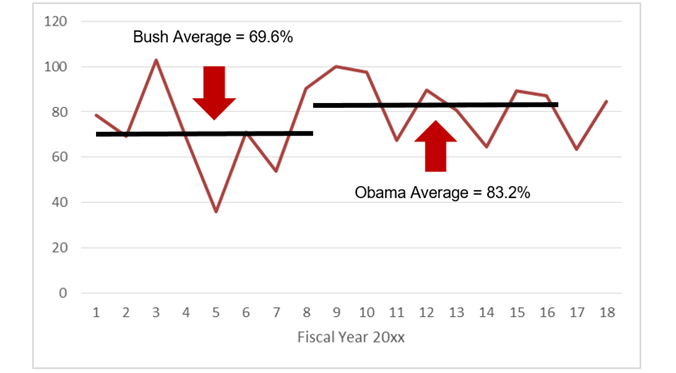The Federal Trade Commission (FTC) and Department of Justice Antitrust Division (DOJ or Antitrust Division) recently released the Hart-Scott-Rodino Annual Report for Fiscal Year 2018 covering October 1, 2017 through September 30, 2018. This report is the first opportunity to review data regarding merger challenges issued exclusively during the Trump administration. Of note, the 2018 Report confirms an ongoing trend since the Bush era: the issuance of a request for additional information (Second Request) has a high correlation with the agencies challenging a proposed transaction or the parties abandoning a transaction.
The likelihood of the FTC or Antitrust Division challenging a transaction in the form of a consent decree, litigation, or the parties abandoning the transaction entirely after the issuance of a Second Request has remained over 60 percent during the past decade. During the fiscal years ended during the George W. Bush administration, an average of 69.6 percent of adjusted reported transactions that received Second Requests ultimately were challenged. This number increased to 83.2 percent during the fiscal years ended during the Obama administration. Said another way, in just a few years, transactions were over 14.2 percent more likely to be challenged if they received Second Requests. But according to the 2018 Report, the FTC or DOJ challenged 39 of the 45 transactions—or almost 87 percent—that were subject to Second Requests in FY2018.

Percent of Merger Challenges filed following Second Requests, by FY
Just over half of the challenged transactions (20 of 39) were resolved via settlement. Of these transactions, the FTC settled 12 of its 22 challenged transactions (55 percent) while the DOJ's Antitrust Division settled 8 of its 17 challenged transactions (47 percent). About 15 percent of the challenged transactions were brought to either federal or administrative court (5 FTC challenges, 1 DOJ challenge). And in 9 instances, the parties to the proposed transaction abandoned the merger after being challenged by the reviewing agency (5 FTC matters; 4 DOJ matters). Four transactions were restructured post-challenge to resolve concerns raised by the Antitrust Division.
Although this is the most up-to-date data publicly available, it is still almost a year old. Also, this data is imperfect because not all reported transactions received Second Requests and/or are resolved within the same fiscal year. This data does, however, underscore the importance and benefit of advance planning and strategy to avoid a Second Request investigation whenever possible.





